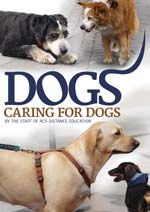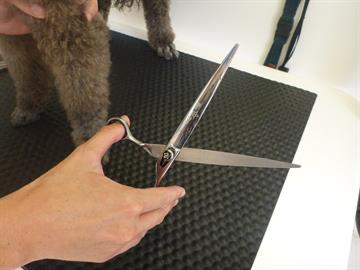Dog Coats and Grooming

What Type of Coat Does Your Dog Have?
Different types of coats need different grooming techniques so it is important to know how to deal with different lengths of hair.
Coat types
There are many different types of coat in dogs, all having their different requirement for grooming and care
Long haired
Long haired dogs are sometimes ‘fashionable’, but there can be many problems associated with such breeds. Ticks and fleas are more common and they can be difficult to both detect and remove due to the long hair. Long hair can also hide unhealthy skin conditions and they can develop to a more serious stage before they are noticed. They require more grooming, maintenance and care than short haired dogs. Matted hair around the anus can prevent the dog from defecating properly which is extremely serious and can require veterinary care. Often long haired breeds are predisposed to poor circulation around the ear canal. A more moist environment around the ear can increase the chances of bugs breeding and causing canker or infection in the ear. It is important to check the dogs coat regularly and establish a grooming routine to prevent matting and also to get the dog used to being groomed. Breeds include the Shit-zu and Red Setters.
Short haired
Short hair breeds will generally drop less hair and require less grooming, however, there is still a need to get rid of dead hair and debris within the coat and this can be done by using a slicker brush or a soft brush. Short haired breeds with a dense undercoat will also require the undercoat to be groomed out on occasion using a brush known as a shedding rake to prevent mats from forming. These include breeds such as the Beagle and the Labrador retriever.
Smooth Coat
The coat on these breeds is sleek and shiny; it appears more like a skin than a coat. These breeds do not need to be brushed every day, however, it is still beneficial as it helps to keep the oil evenly distributed over the coat and makes sure the coat is free of shed hairs and dirt. The basic tool for grooming a smooth coat is a bristle brush. These include the Weimaraner and the Great Dane
Wire Haired
These coats should be rough and bristly. The outer guard hairs that are straight in other breeds are harsh and kinked. One way to groom wire haired dogs is to pluck out or strip straggly hairs using fingers or a stripping knife. This will stimulate the dog’s skin allowing healthy new hairs to grow. These include the Fox terrier and the Border terrier.
Single Coats
Dogs with single coats have the outer guard hairs, but lack the inner layer of undercoat. Single coated breeds should never be groomed when their coats are dry as this may cause the coat to break. It is advisable to spray the coat first with water or conditioner. Matting in single-coated breeds is a big problem. These breeds include the Afghan Hound and Maltese Terrier.
Double
Most of the herding and working breeds, as well as many of the sporting dogs have double coats. Such coats developed because of the purposes for which they were bred. Most double-coated dogs were intended to remain outside and work no matter what the weather. Double coats consist of outer guard hairs, with an inner layer of shorter, finer coat called undercoat. This undercoat can be fine or downy, thick or thin. These include the Samoyed, Rough collie and Old English sheepdog.
Corded
These breeds have curly coats that are allowed to mat forming ‘cords’, similar to dreadlocks. These cords create a weather resistant shield in herding and some hunting breeds. Dogs with corded coats require baths to keep their coats clean and odour free. Corded coats take hours to dry following each bath. This includes the Hungarian Puli and the Komondor.
Woolly or Wavy
The wavy coat is characterised by curls. This type of coat tangles and knots easily and has a tendency to become dry. Before brushing the coat should always be sprayed with some sort of conditioning spray to avoid breakage. This includes Poodles.
No coat or hairless
The skin of these breeds must be maintained just as other breed’s coats are groomed. They need regular baths and moisturiser and possibly sunscreen in hot climates. These breeds include the Chinese Crested and the American Hairless Terrier.
Grooming benefits the dog in a variety ways. Firstly it distributes protective oils throughout the coat, keeping the skin clean and healthy. It stops the coat from getting matted which is particularly important in long haired breeds. It also prevents the build up of dirt and dead hair in the coat. If grooming is started early, dogs get used to being handled and this also makes any veterinary examinations much easier. There is also evidence that grooming sessions reduce stress and blood pressure for both dog and owner!

These notes are taken from the ebook, Dog Care, written by our principal John Mason, together with academic staff from the school.
[15/01/2025 23:04:19]